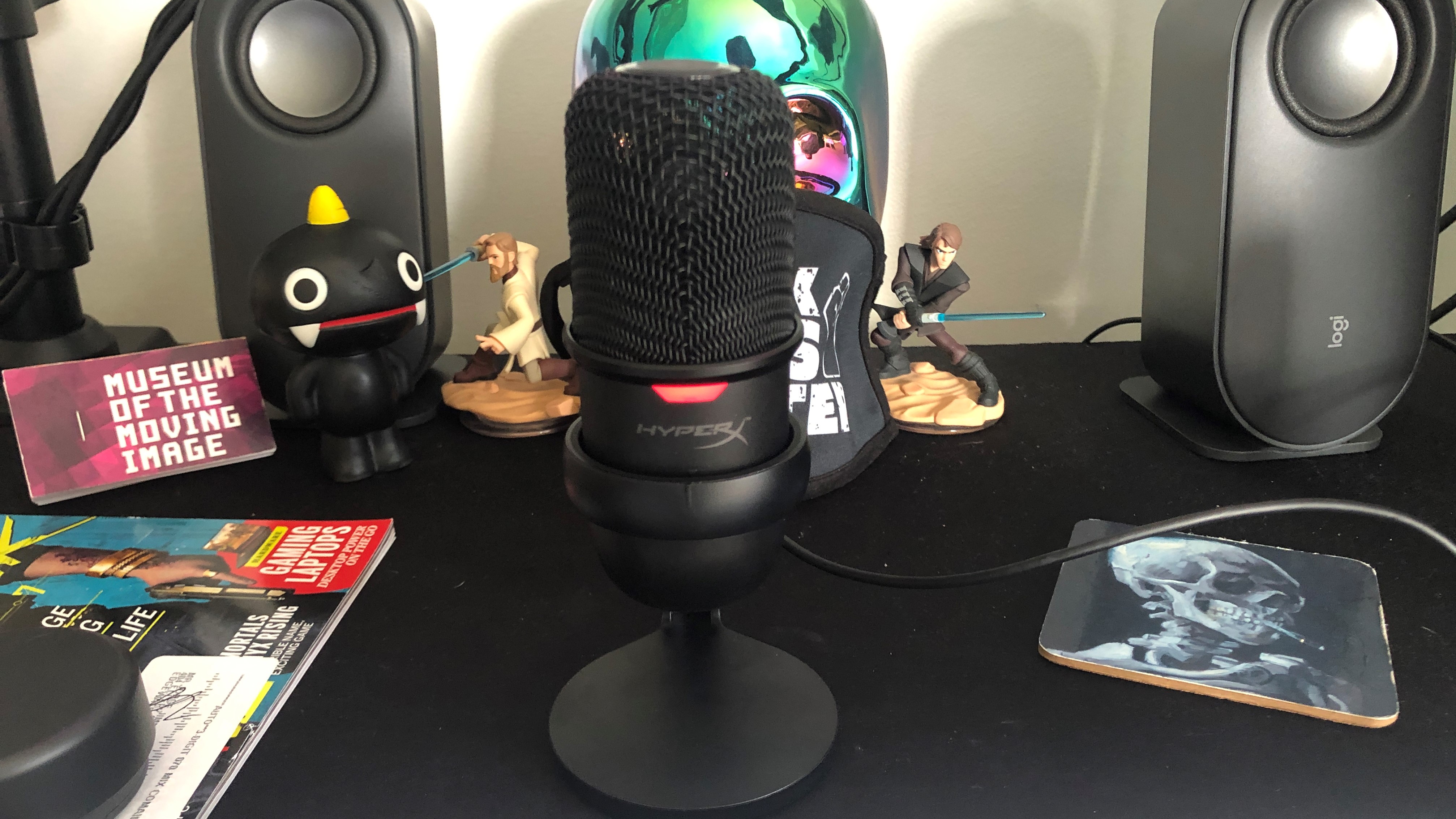Our Verdict
The HyperX Solocast is a no-frills plug-and-play budget microphone that sacrifices a broad feature set for killer sound.
For
- Sounds nearly identical to QuadCast Mic
- Just $60
Against
- Limited feature-set
- Not as flashy
PC Gamer's got your back
The new HyperX SoloCast microphone is all about delivering higher-fidelity voice recording for gamers on a budget. And it's not the only one, because when buying hardware, cost is always going to be a driving factor for most people. If you have a limited budget, you always have to think about what sort of features and creature comforts you can do without while still getting the job done.
As a content creator, you'll have prioritized what's most important to make an awesome stream, or simply capture great audio and video. Sensing an opportunity, HyperX (and Razer with its Seiren Mini, for that matter) has released its own budget mini microphone.
For less than $60 you're really paying for the portability and ease of use. As far as sound quality is concerned, you usually get what you pay for, but the HyperX SoloCast is hoping to prove that a microphone that's cheaper in price doesn't have to mean cheap sound.
The SoloCast seems to take a 'sound over anything else' approach, much in the same way its wildly successful HyperX Cloud gaming headsets have. At a glance, it seems that HyperX has stripped down one of its QuadCast mics down to the bare essentials. We reviewed the $160 HyperX Quadcast S recently and fell in love with its sound and the number of smart quality-of-life features on the microphone which really set it apart from other mics.
Price: $60 on Amazon
Condensers: 1
Directional Patterns: Unidirectional Cardioid Polar Pattern
Controls: Tap-to-mute sensor
Recording Sample Rate: 48kHz
Bit Depth: 16-bit
Weight: 9.2 oz
When comparing the HyperX SoloCast and QuadCast S, the sound quality is scarily similar when using cardioid mode across both. Both mics have a 20Hz-20kHz frequency response and a 16-bit sample rate. So the quality of sound is there if that's your chief concern. Unlike its namesake, the SoloCast has just the single cardoid polar pattern as opposed to the four that's offered on the QuadCast mics.
To keep costs down you can see where HyperX needed to trim some fat in order to hit that audible sweet spot, though. Below you can listen to the two mics and compare for yourself.
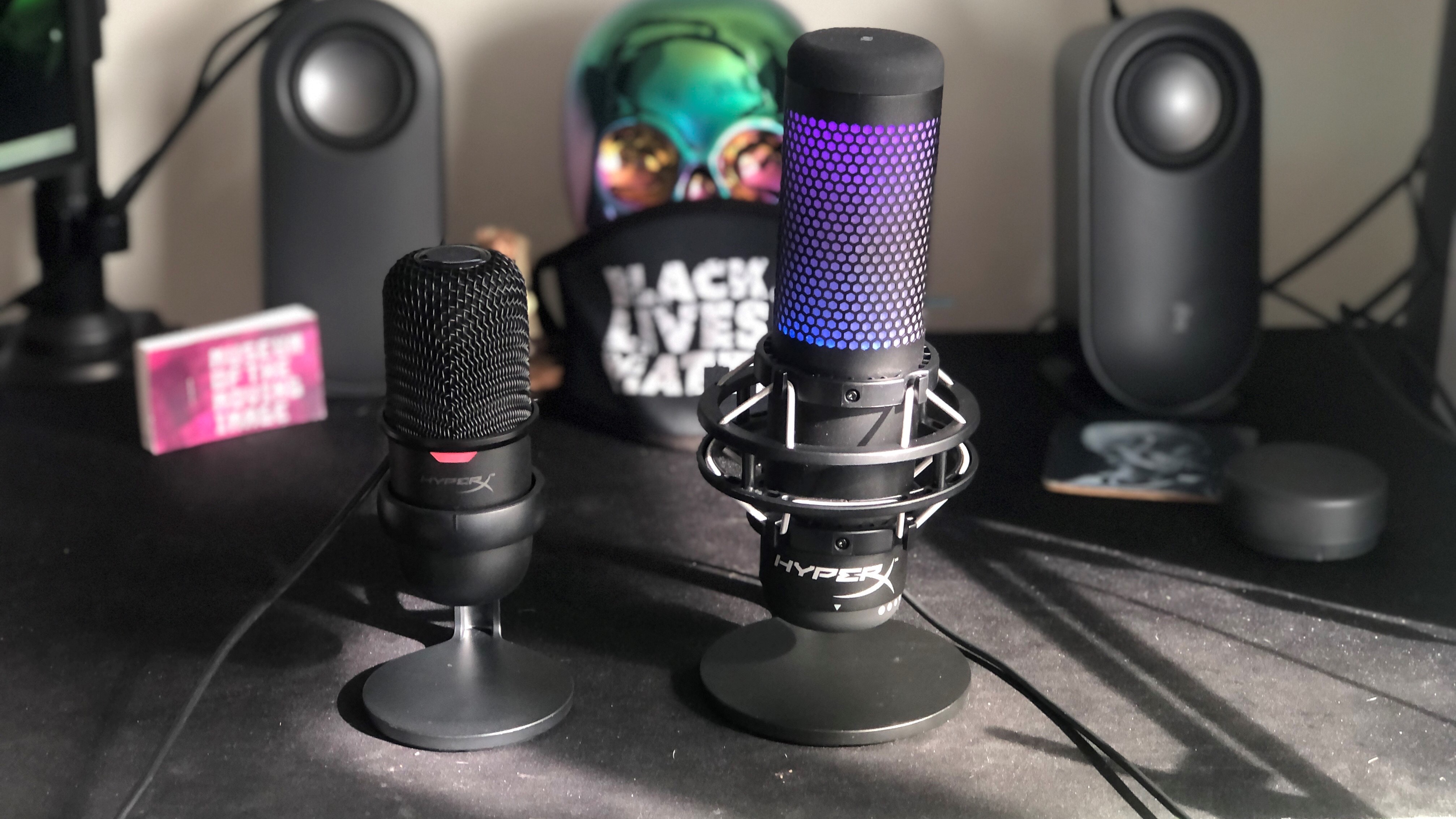
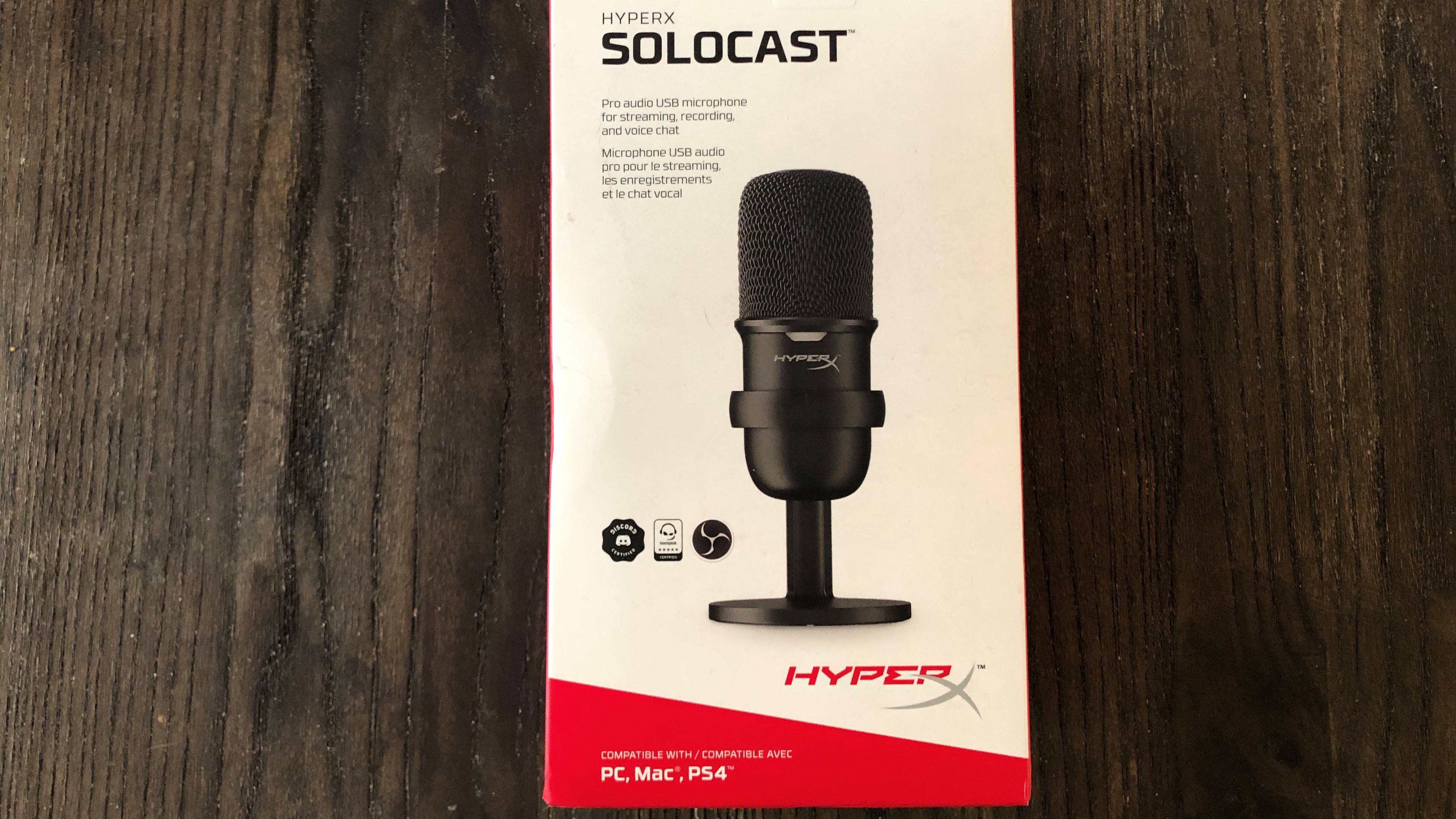
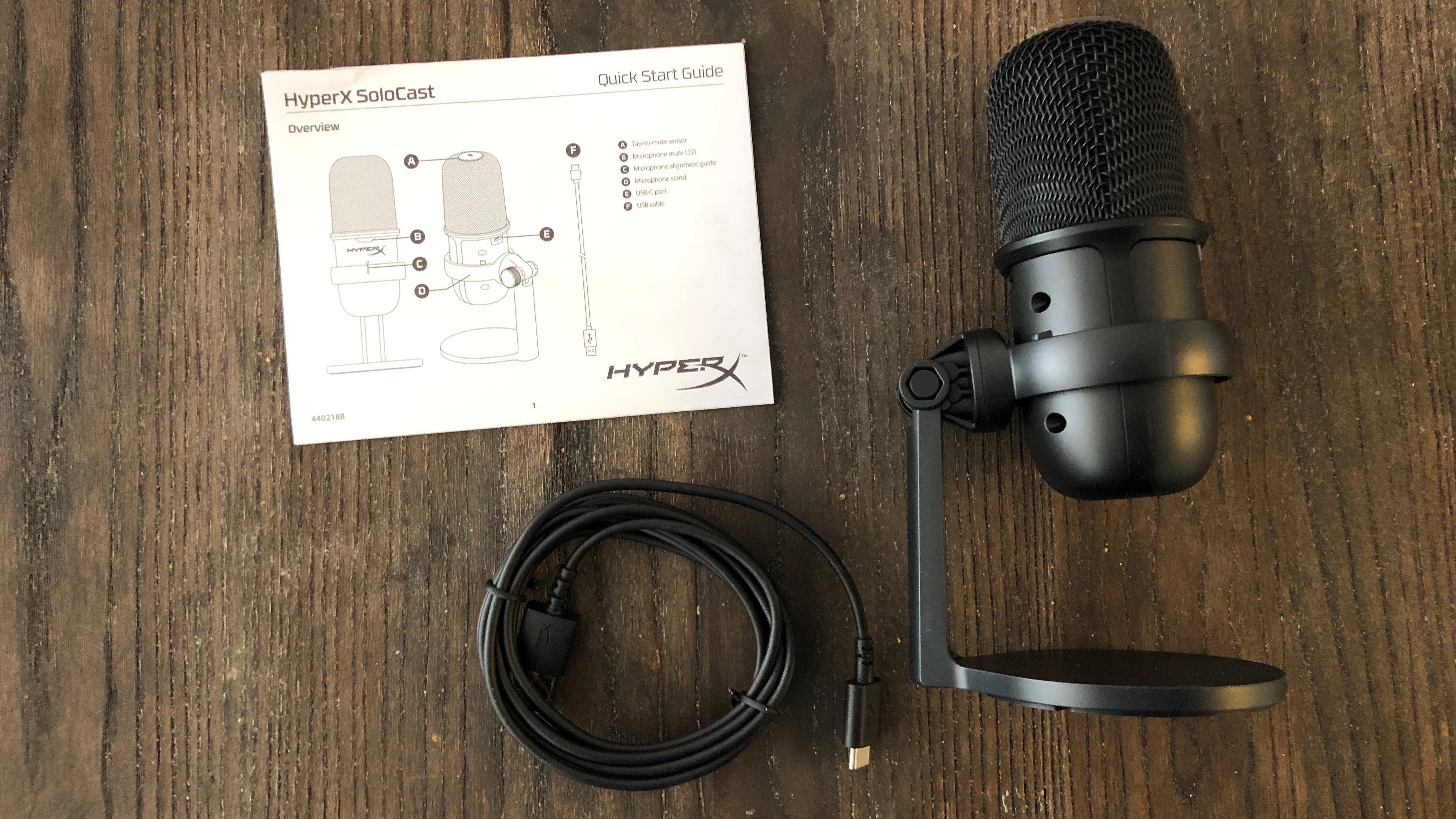
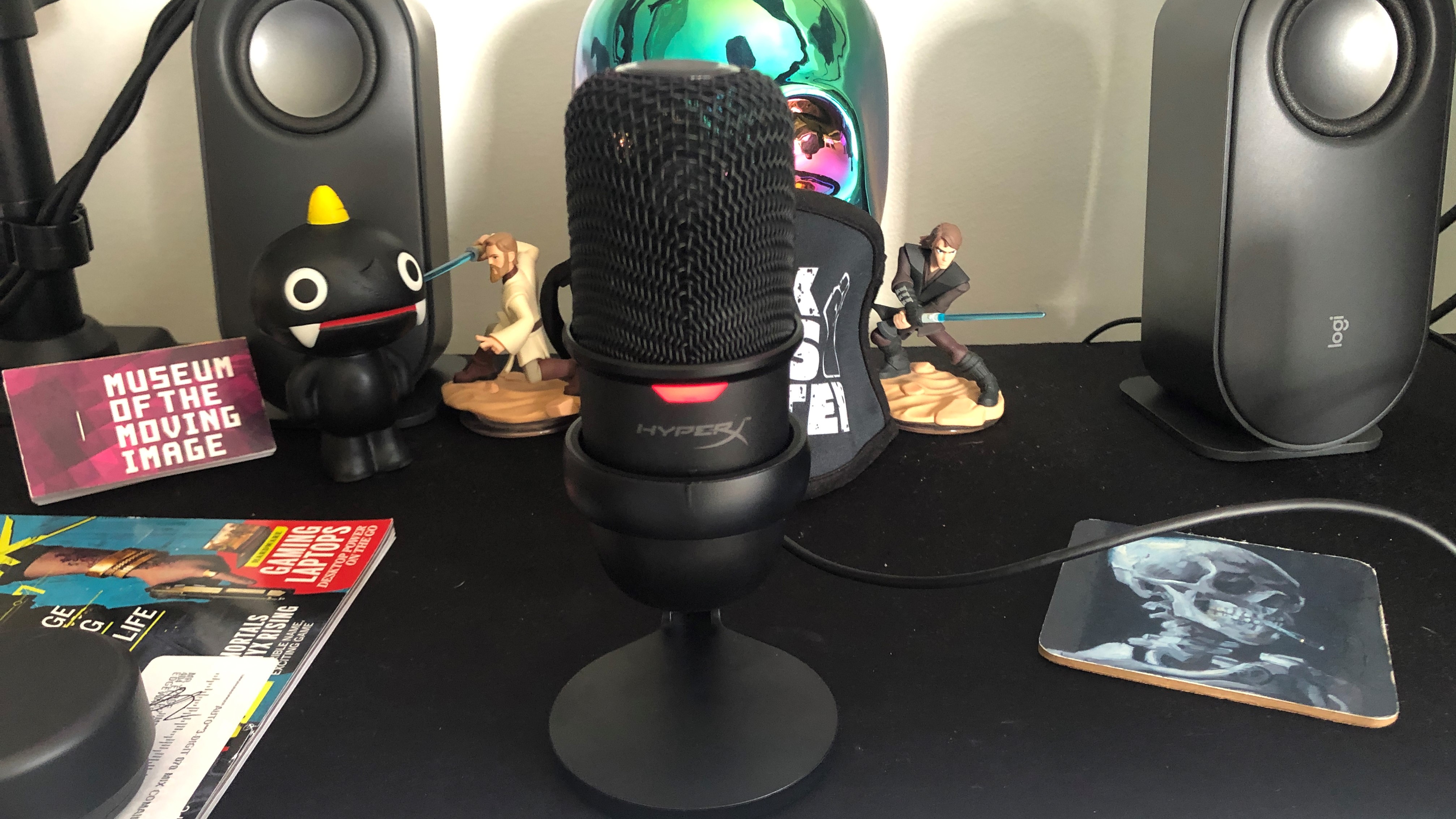
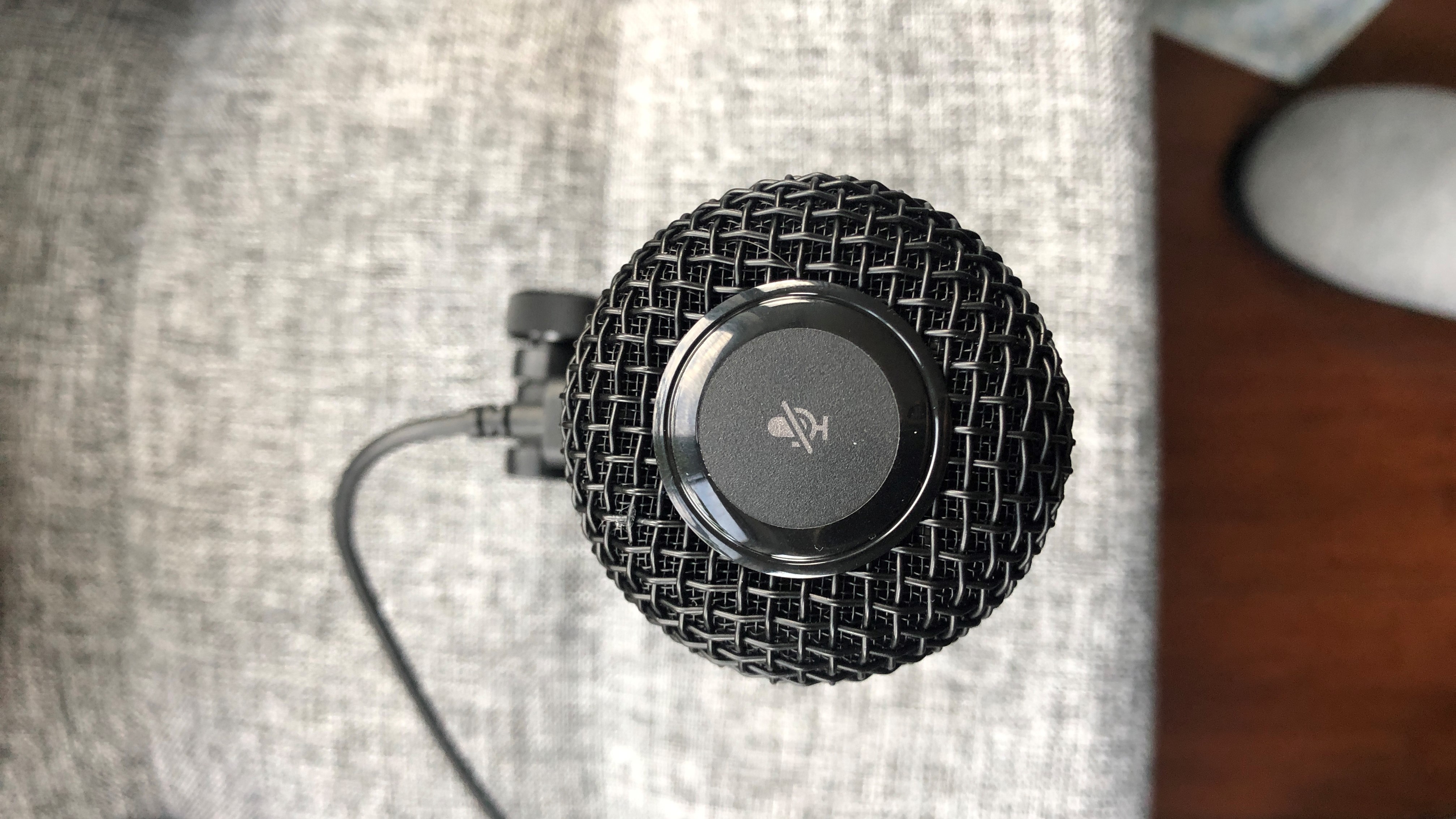
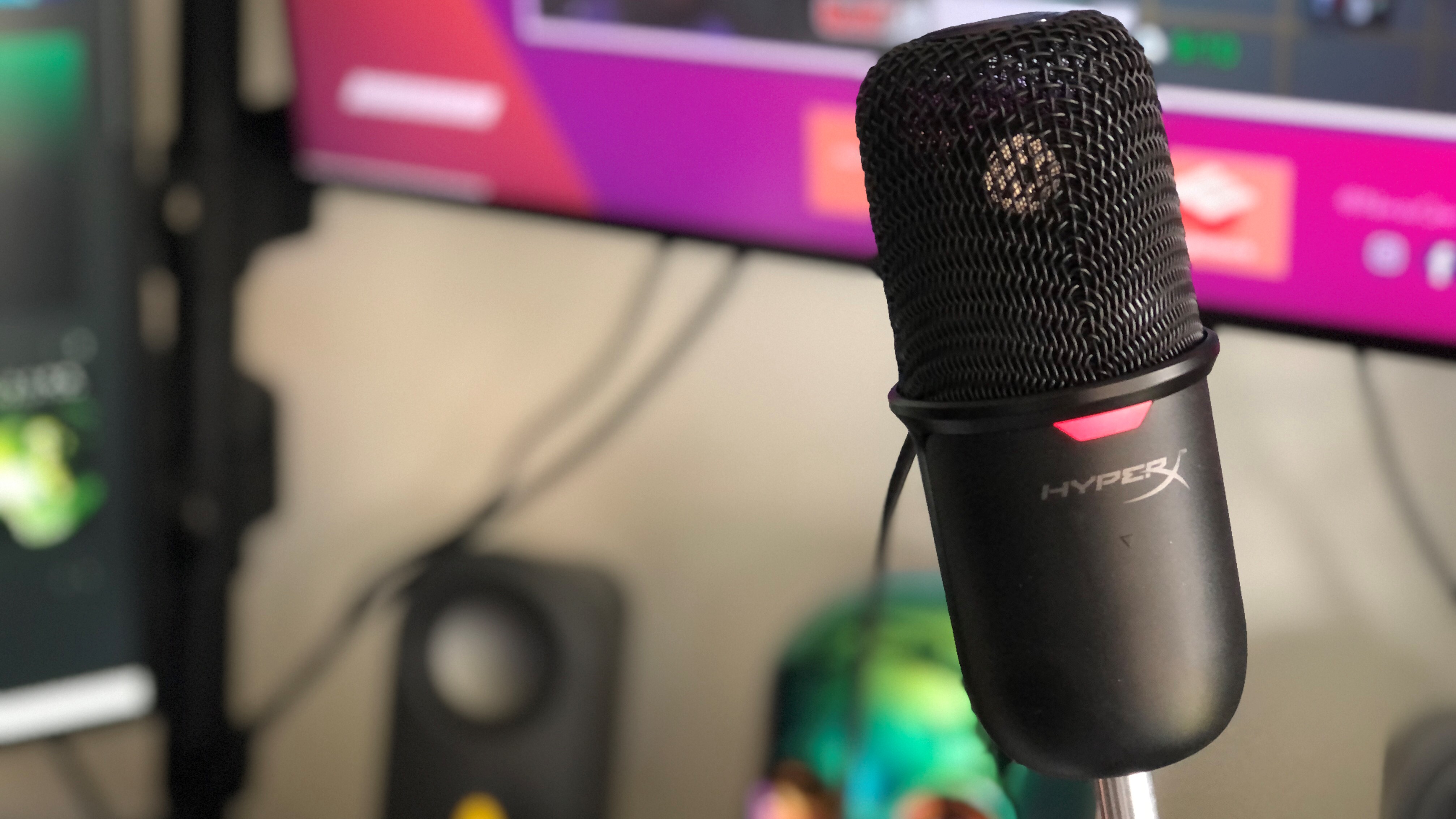
The features HyperX has sacrificed to the audio gods are a headphone jack, gain control, shock mount, internal pop filter, and, let's not forget, that fun looking RGB lighting. All gone with the simplistic SoloCast.
The gain control is particularly missed, as not being able to regulate the gain on the fly with the SoloCast is a pain since the mic sounded just a bit too hot out of the box. This means any changes you need to do have to be done on the software level in your streaming apps, such as OBS or XSplit. If you run a simple stream, or record on the go, the ease of set up is great, but if you like to have a little more control over every aspect of your audio, you'll want to expand your budget.
Sound quality is more in line with microphones twice its price, and that is a huge deal
The SoloCast opts for a pill-shaped design that sits at roughly half the size of the QuadCast S, and is fairly similar in stature to the Razer Seiren Mini. In lieu of RGB you have the single LED status indicator. There or no buttons or dials like I mentioned before, just a tap-to-mute sensor. It's a very understated look that lacks a lot of the HyperX charm we've come to know from a lot of its products.
The mic itself can be easily pulled from the stand if you need to mount it on a boom arm. The USB Type-C connection makes for easy plug and play along with playing nicely on Macs, and even a PlayStation 4, in case you do you're streaming directly to Twitch from the console.
What this single-condenser microphone does come with is an adjustable stand, boom arm and mic stand threading, and tap-to-mute sensor. Now, you may chuckle at the idea of the SoloCast having a mute button as a standout feature, but we've seen other budget microphones forgo the ability to mute the mic to drive costs down. One such culprit is the Razer Seiren Mini, which we will be checking out soon.
While not as flashy as other HyperX offerings, the SoloCast easily takes the crown of best budget microphone (for now), dethroning the surprisingly impressive JLab Audio Talk GO microphone. Though only $10 more expensive than the Talk GO, the SoloCast's sound quality is more in line with microphones twice its price, and that is a huge deal. Quality streaming gear at more affordable prices means that more people can easily create that #content.
The HyperX Solocast is a no-frills plug-and-play budget microphone that sacrifices a broad feature set for killer sound.

Jorge is a hardware writer from the enchanted lands of New Jersey. When he's not filling the office with the smell of Pop-Tarts, he's reviewing all sorts of gaming hardware, from laptops with the latest mobile GPUs to gaming chairs with built-in back massagers. He's been covering games and tech for over ten years and has written for Dualshockers, WCCFtech, Tom's Guide, and a bunch of other places on the world wide web.
